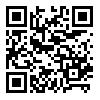Volume 2, Issue 2 (September- 2013)
Caspian J Dent Res 2013, 2(2): 36-41 |
Back to browse issues page
Download citation:
BibTeX | RIS | EndNote | Medlars | ProCite | Reference Manager | RefWorks
Send citation to:



BibTeX | RIS | EndNote | Medlars | ProCite | Reference Manager | RefWorks
Send citation to:
Amouei A, Khosravi M, Asgharnia H, Ghanbari H, Faraji H. Evaluation of quality and quantity of solid wastes in Babol Dental Faculty–North of Iran. Caspian J Dent Res 2013; 2 (2) :36-41
URL: http://cjdr.ir/article-1-82-en.html
URL: http://cjdr.ir/article-1-82-en.html
,Dental Materials Research Center, Department of Periodontics, Faculty of Dentistry, Babol University of Medical Sciences, Babol-Iran. , Samani_dr@yahoo.com
Abstract: (15109 Views)
Introduction: Dental wastes are a main part of urban solid wastes in each society and have pathogenic agents and toxic chemicals, which put health of patients, personnel and other referees to dental clinics in danger. The present study was done to recognize the quality and quantity of the different generated wastes at various parts of the Faculty of Dentistry-Babol University of Medical Sciences.
Methods: The whole solid wastes generated in the odd and even days (Monday, Tuesday and Wednesday) of the middle of the week from the second month of each season were examined. Various dental solid wastes including general, infectious and hazardous chemical wastes were weighted by typical scale.
Results: The generation rate of the solid wastes were: total dental wastes: 291.2 kg including general solid wastes: 251.3 kg (%86.3), infectious wastes and sharps: 38 kg (%13) and hazardous chemical waste: 2 kg (%0.7). The total amount of wastes in a year was 69888 kg. The solid wastes are daily produced according to each active dental unit as total, domestic-type, infectious and the hazardous chemical wastes were 3.07 kg, 2.65 kg, 0.4 kg and 0.02 kg, respectively.
Conclusions: Considering the quality and quantity of the generated dental solid wastes especially infectious wastes and their unfavorable effects on the peoples' health and environment, it is necessary to compile a distinct policy for the management of these medical solid wastes. Also, holding training workshops, knowledge of the staffs in the dentistry care centers should be increased to avoid possible dangers.
Methods: The whole solid wastes generated in the odd and even days (Monday, Tuesday and Wednesday) of the middle of the week from the second month of each season were examined. Various dental solid wastes including general, infectious and hazardous chemical wastes were weighted by typical scale.
Results: The generation rate of the solid wastes were: total dental wastes: 291.2 kg including general solid wastes: 251.3 kg (%86.3), infectious wastes and sharps: 38 kg (%13) and hazardous chemical waste: 2 kg (%0.7). The total amount of wastes in a year was 69888 kg. The solid wastes are daily produced according to each active dental unit as total, domestic-type, infectious and the hazardous chemical wastes were 3.07 kg, 2.65 kg, 0.4 kg and 0.02 kg, respectively.
Conclusions: Considering the quality and quantity of the generated dental solid wastes especially infectious wastes and their unfavorable effects on the peoples' health and environment, it is necessary to compile a distinct policy for the management of these medical solid wastes. Also, holding training workshops, knowledge of the staffs in the dentistry care centers should be increased to avoid possible dangers.
Type of Study: Research Paper |
Send email to the article author
| Rights and permissions | |
 |
This work is licensed under a Creative Commons Attribution-NonCommercial 4.0 International License. |








